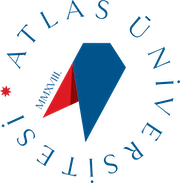| Week |
Subject |
Related Preparation |
| 1) |
Neuronal Signal Transduction |
Cognition, brain, and consciousness : introduction to cognitive neuroscience. Bernard J Baars; Nicole M Gage
Beyin-Davranış İlişkileri Üzerine Konferanslar ve Dersler 2,Oğuz Tanrıdağ,2019, Üsküdar Üniversitesi Yayınları. |
| 2) |
Neuroglial Cells |
Cognition, brain, and consciousness : introduction to cognitive neuroscience. Bernard J Baars; Nicole M Gage
Beyin-Davranış İlişkileri Üzerine Konferanslar ve Dersler 2,Oğuz Tanrıdağ,2019, Üsküdar Üniversitesi Yayınları. |
| 3) |
Neurotransmission |
Cognition, brain, and consciousness : introduction to cognitive neuroscience. Bernard J Baars; Nicole M Gage
Beyin-Davranış İlişkileri Üzerine Konferanslar ve Dersler 2,Oğuz Tanrıdağ,2019, Üsküdar Üniversitesi Yayınları. |
| 4) |
Neurotransmission |
Cognition, brain, and consciousness : introduction to cognitive neuroscience. Bernard J Baars; Nicole M Gage
Beyin-Davranış İlişkileri Üzerine Konferanslar ve Dersler 2,Oğuz Tanrıdağ,2019, Üsküdar Üniversitesi Yayınları. |
| 5) |
Macro Anatomy of the Central Nervous System |
Cognition, brain, and consciousness : introduction to cognitive neuroscience. Bernard J Baars; Nicole M Gage
Beyin-Davranış İlişkileri Üzerine Konferanslar ve Dersler 2,Oğuz Tanrıdağ,2019, Üsküdar Üniversitesi Yayınları. |
| 6) |
Macro Anatomy of the Central Nervous System |
Cognition, brain, and consciousness : introduction to cognitive neuroscience. Bernard J Baars; Nicole M Gage
Beyin-Davranış İlişkileri Üzerine Konferanslar ve Dersler 2,Oğuz Tanrıdağ,2019, Üsküdar Üniversitesi Yayınları. |
| 7) |
Cerebrovascular Circulation |
Cognition, brain, and consciousness : introduction to cognitive neuroscience. Bernard J Baars; Nicole M Gage
Beyin-Davranış İlişkileri Üzerine Konferanslar ve Dersler 2,Oğuz Tanrıdağ,2019, Üsküdar Üniversitesi Yayınları. |
| 8) |
Midterm Exam |
Cognition, brain, and consciousness : introduction to cognitive neuroscience. Bernard J Baars; Nicole M Gage
Beyin-Davranış İlişkileri Üzerine Konferanslar ve Dersler 2,Oğuz Tanrıdağ,2019, Üsküdar Üniversitesi Yayınları. |
| 9) |
Somatic Senses |
Cognition, brain, and consciousness : introduction to cognitive neuroscience. Bernard J Baars; Nicole M Gage
Beyin-Davranış İlişkileri Üzerine Konferanslar ve Dersler 2,Oğuz Tanrıdağ,2019, Üsküdar Üniversitesi Yayınları. |
| 10) |
Transmission of Somatic Sensations to the Central Nervous System |
Cognition, brain, and consciousness : introduction to cognitive neuroscience. Bernard J Baars; Nicole M Gage
Beyin-Davranış İlişkileri Üzerine Konferanslar ve Dersler 2,Oğuz Tanrıdağ,2019, Üsküdar Üniversitesi Yayınları. |
| 11) |
Cortical Motor Areas |
Cognition, brain, and consciousness : introduction to cognitive neuroscience. Bernard J Baars; Nicole M Gage
Beyin-Davranış İlişkileri Üzerine Konferanslar ve Dersler 2,Oğuz Tanrıdağ,2019, Üsküdar Üniversitesi Yayınları. |
| 12) |
Transport of Motor Commands to the Periphery |
Cognition, brain, and consciousness : introduction to cognitive neuroscience. Bernard J Baars; Nicole M Gage
Beyin-Davranış İlişkileri Üzerine Konferanslar ve Dersler 2,Oğuz Tanrıdağ,2019, Üsküdar Üniversitesi Yayınları. |
| 13) |
The Role of the Brainstem in Control of Motor Movements |
Cognition, brain, and consciousness : introduction to cognitive neuroscience. Bernard J Baars; Nicole M Gage
Beyin-Davranış İlişkileri Üzerine Konferanslar ve Dersler 2,Oğuz Tanrıdağ,2019, Üsküdar Üniversitesi Yayınları. |
| 14) |
Spinal Reflexes |
Cognition, brain, and consciousness : introduction to cognitive neuroscience. Bernard J Baars; Nicole M Gage
Beyin-Davranış İlişkileri Üzerine Konferanslar ve Dersler 2,Oğuz Tanrıdağ,2019, Üsküdar Üniversitesi Yayınları. |
| 14) |
Spinal Reflexes |
Cognition, brain, and consciousness : introduction to cognitive neuroscience. Bernard J Baars; Nicole M Gage
Beyin-Davranış İlişkileri Üzerine Konferanslar ve Dersler 2,Oğuz Tanrıdağ,2019, Üsküdar Üniversitesi Yayınları. |
| 15) |
Spinal Reflexes |
Cognition, brain, and consciousness : introduction to cognitive neuroscience. Bernard J Baars; Nicole M Gage
Beyin-Davranış İlişkileri Üzerine Konferanslar ve Dersler 2,Oğuz Tanrıdağ,2019, Üsküdar Üniversitesi Yayınları. |
| 16) |
Final exam |
Cognition, brain, and consciousness : introduction to cognitive neuroscience. Bernard J Baars; Nicole M Gage
Beyin-Davranış İlişkileri Üzerine Konferanslar ve Dersler 2,Oğuz Tanrıdağ,2019, Üsküdar Üniversitesi Yayınları. |
| |
Program Outcomes |
Level of Contribution |
| 1) |
To be able to use theoretical and practical knowledge in their own fields with sufficient knowledge in the field of basic health and speech and language therapy profession. |
2 |
| 2) |
Ability to detect, identify, interpret, formulate and solve speech, language, voice and swallowing problems; ability to select and apply appropriate analysis and intervention approaches for this purpose. |
5 |
| 3) |
Ability to understand and interpret a process, event, case, equipment or product and to solve related problems with a holistic perspective and contemporary methods. |
5 |
| 4) |
Ability to work effectively individually and in teams. |
5 |
| 5) |
To have taken at least two out-of-field courses in their education programs |
5 |
| 6) |
The ability to develop, select and use current and functional tools necessary for speech and language therapy field applications as well as the ability to use information technologies effectively. |
5 |
| 7) |
Ability to communicate effectively both orally and in writing in Turkish, knowledge of at least one foreign language. |
4 |
| 8) |
Awareness of lifelong learning, access to information, ability to follow developments in science and technology and continuous self-renewal. |
4 |
| 9) |
Ability to design experiments/field studies, collect data, analyze, interpret and report the results on topics specific to the discipline of speech-language pathology. |
4 |
| 10) |
To be aware of the universal and social effects and legal consequences of speech and language therapy field practices. |
4 |
| 11) |
Awareness of professional ethics and responsibility. |
|
 BİLGİ PAKETİ / DERS KATALOĞU
BİLGİ PAKETİ / DERS KATALOĞU
